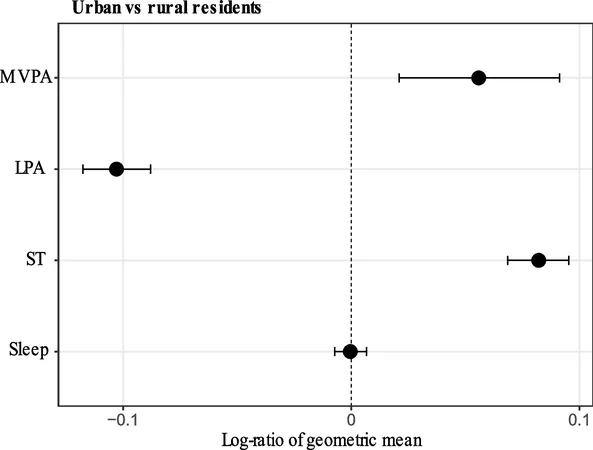
Unlocking the Mystery: How Your Daily Habits Impact Depression in Urban vs. Rural Areas
2025-04-13
Author: Ming
Are Your Daily Activities Affecting Your Mood?
Recent research shines a light on how our daily routines—including physical activity, sedentary behavior, and sleep—interact with depressive symptoms. Surprisingly, the effects can differ significantly based on whether you live in an urban or rural setting.
The Groundbreaking Study
A comprehensive study involving 4,295 middle-aged Finns explored the subtle connections between 24-hour movement patterns and depressive symptoms. Participants wore accelerometers for two weeks, allowing researchers to analyze how much time was spent sleeping, engaging in light or moderate-to-vigorous physical activity, and simply being sedentary.
Urban vs. Rural: The Key Findings
The study revealed distinct differences in how urban and rural residents experience depressive symptoms based on their activity levels. In rural areas, spending more time sleeping relative to other activities correlated with lower depression scores. Conversely, urban dwellers who were more sedentary reported higher levels of depressive symptoms. Fascinatingly, reallocating more time to physical activity or sleep benefited those in rural settings, while urban residents found relief by reducing sedentary time.
Why This Matters Now More Than Ever
Given that depression is a leading cause of disability worldwide—impacting over 4.4% of the global population—understanding how our environment and behaviors intertwine with mental well-being is crucial. The COVID-19 pandemic has only intensified the urgency for such insights.
Breakthrough Insights into Behavior and Mood
Physical activity has long been linked to better mental health. Various studies indicate that engaging in moderate-to-vigorous physical activity (MVPA) can significantly alleviate symptoms of depression, not just for clinical cases, but even in individuals without a formal diagnosis. This new research builds on that foundation by emphasizing the importance of looking at daily behaviors holistically instead of in isolation.
Revolutionizing the Approach to Mental Health
Using a novel compositional analysis technique, researchers were able to paint a more complete picture of how movement behaviors are interconnected. The findings could reshape how we think about addressing mental health issues, particularly the role that our daily routines play.
A Call to Action
As we delve deeper into the counseling and treatment of depression, it's essential to incorporate these findings into prevention strategies. Encouraging individuals—especially those living in urban environments—to minimize sedentary time in favor of more active or restorative behaviors could be vital for mental health initiatives.
Final Thoughts
In conclusion, the way we structure our days has profound implications for our mental health. By understanding these dynamics, we can better tailor interventions aimed at improving mental well-being for both urban and rural populations. As future studies unfold, they will no doubt reveal even more about the intricate dance between where we live, how we move, and our mental health.


 Brasil (PT)
Brasil (PT)
 Canada (EN)
Canada (EN)
 Chile (ES)
Chile (ES)
 Česko (CS)
Česko (CS)
 대한민국 (KO)
대한민국 (KO)
 España (ES)
España (ES)
 France (FR)
France (FR)
 Hong Kong (EN)
Hong Kong (EN)
 Italia (IT)
Italia (IT)
 日本 (JA)
日本 (JA)
 Magyarország (HU)
Magyarország (HU)
 Norge (NO)
Norge (NO)
 Polska (PL)
Polska (PL)
 Schweiz (DE)
Schweiz (DE)
 Singapore (EN)
Singapore (EN)
 Sverige (SV)
Sverige (SV)
 Suomi (FI)
Suomi (FI)
 Türkiye (TR)
Türkiye (TR)
 الإمارات العربية المتحدة (AR)
الإمارات العربية المتحدة (AR)